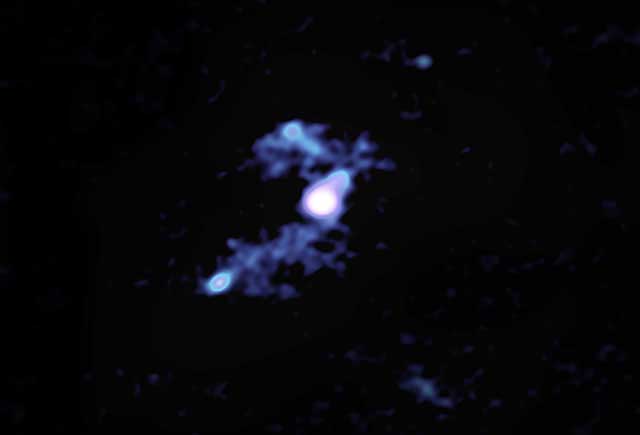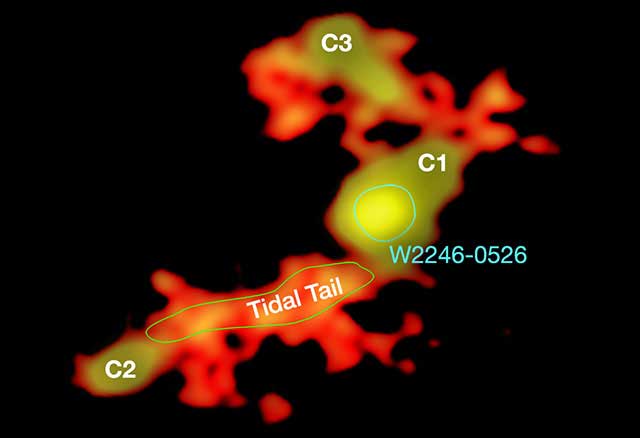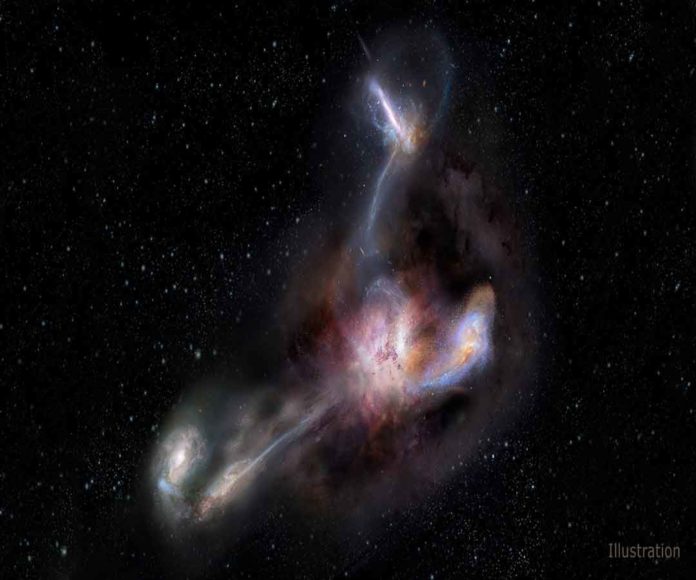Discovered in 2015, the galaxy, called WISE J224607.55-052634.9, is by no means the largest or most massive galaxy. It emits 350 trillion times the luminosity of the Sun.
In a new study, NASA scientists observed that the galaxy is cannibalizing not one, not two, but at least three of its smaller neighbors. The material that the galaxy is stealing from its neighbors is likely contributing to its uber-brightness.
Scientists made this observation using the Atacama Large Millimeter/submillimeter Array (ALMA). They captured distinct trails of dust being pulled from three smaller galaxies into W2246-0526.

Like any engine on Earth, W2246-0526’s enormous energy output requires an equally high fuel input. In this case, that means gas and dust to form stars and to replenish the cloud around the central black hole.
The new study shows that the amount of material being accreted by WJ2246-0526 from its neighbors is enough to replenish what is being consumed, thereby sustaining the galaxy’s tremendous luminosity.
Scientists used images from ALMA – a collection of individual radio antennas that work together as single telescope – to identify the dusty trails of material. The position of the accretion trails strongly suggests they contain material flowing between W2246-0526 and the other galaxies.
This kind of galactic cannibalism is not uncommon. Astronomers have previously observed galaxies merging with or accreting matter from their neighbors in the nearby universe. For example, the pair of galaxies collectively known as “the Mice” are so named because each has a long, thin tail of accreting material stretching away from it.

Diaz-Santos said, “We knew from previous data that there were three companion galaxies, but there was no evidence of interactions between these neighbors and the central source. We weren’t looking for cannibalistic behavior and weren’t expecting it, but this deep dive with the ALMA observatory makes it very clear.”
A companion study about W2246-0526, published on Nov. 14 in the Sun.
